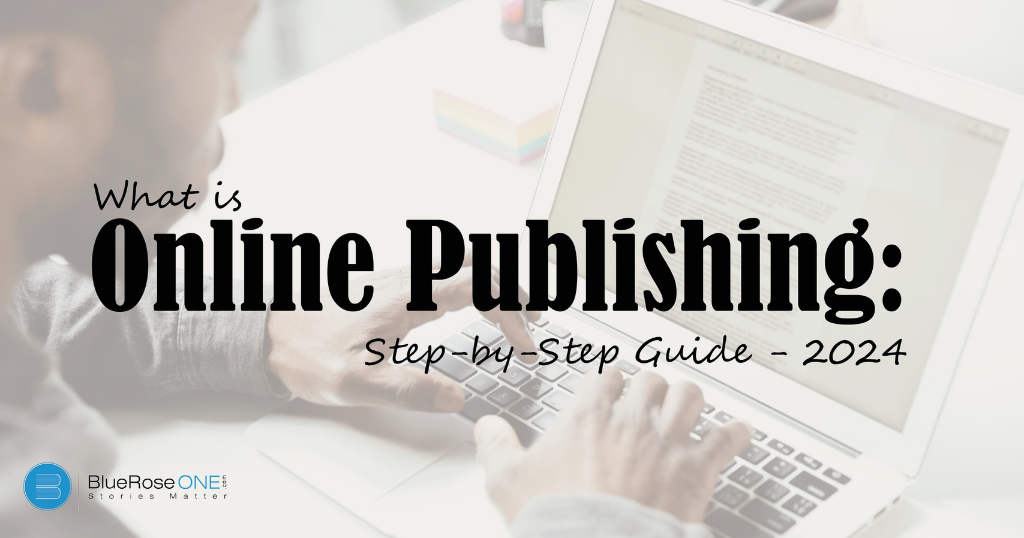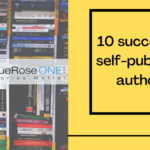What is Online Publishing?
Online publishing is the dissemination of material via digital platforms accessible via the internet. This new type of publishing has altered the landscape of information sharing by providing a dynamic and accessible platform for writers, journalists, corporations, and individuals to reach a worldwide audience.
At its heart, internet publishing includes a wide variety of material, such as articles, blogs, e-books, digital magazines, and more. The transition from traditional print to online platforms democratised the publishing process, allowing anybody with an internet connection to become a content provider. This accessibility has resulted in the proliferation of voices, opinions, and specialty material that would have been difficult to accommodate in traditional publishing methods.
E-books have become a popular format for online publishing, allowing authors to independently publish and distribute their works without the need for traditional publishing houses. This has empowered writers to retain greater control over their content, cover design, and distribution, opening new avenues for both established and emerging authors.
You may also like: The Rise of Shakti by Megha Dinesh: Book Review
Steps of How to Publish Online
Publishing a book online has become more accessible than ever, thanks to digital platforms that allow authors to share their work with a global audience. Here are the steps to guide you through the process of publishing a book online:
- Write Your Book
- Choose Your Publishing Platform
- Create an Account
- Format Your Manuscript
- Design a Book Cover
- Set the Price
- Choose Distribution Options
- Upload Your Book
- Set Metadata
- Review and Publish
- Market Your Book
- Monitor Sales and Reviews
- Write Your Book:
Initiate your online publishing journey by crafting a compelling manuscript. Make sure your content is not only engaging but also meticulously edited and polished. The strength of your manuscript forms the bedrock of your success in the world of online publishing. - Choose your Publishing Platform:
Carefully pick an online publishing platform that aligns with your objectives. Popular choices include Amazon Kindle Direct Publishing (KDP), Smashwords, and Draft2Digital. Each platform comes with its own set of requirements and advantages, so select the one that best suits your needs and goals. - Create an Account:
Take the crucial step of creating an account on your chosen publishing platform. During the sign-up process, provide all necessary information and take the time to thoroughly read and comprehend the terms and conditions. This foundational step sets the stage for your online publishing endeavour. - Format Your Manuscript:
Prepare your manuscript according to the formatting guidelines specified by the chosen publishing platform. These guidelines often cover aspects such as file format, layout, and cover design. Adhering to these specifications is crucial for a seamless publishing process, ensuring that your book meets the platform’s requirements. - Design a Book Cover:
Craft an attention-grabbing book cover that resonates with your target audience. Many online publishing platforms provide tools for cover design, or you can opt to enlist the services of a professional designer. A visually appealing cover enhances the marketability of your book, making it more likely to attract readers. - Set the Price:
Make a strategic decision on the pricing of your book. Depending on the platform, you may have the flexibility to set your own price or need to adhere to specific pricing structures. Consider market trends, competitor pricing, and the perceived value of your work to determine an optimal price point. Finding the right balance is essential for attracting readers while ensuring your work is appropriately valued. - Choose Distribution Options:
Decide on the distribution strategy for your book. Some platforms may offer exclusive distribution agreements, limiting where your book is available, while others allow broader distribution across various online retailers. Consider the reach you want for your work and choose the option that aligns with your publishing goals. - Upload Your Book:
Follow the platform’s guidelines to upload your meticulously formatted manuscript and eye-catching book cover. Thoroughly review all details to ensure accuracy and a seamless transition from upload to publication. - Set Metadata:
Provide essential metadata, including the book title, author name, a compelling book description, and relevant keywords. This information plays a crucial role in making your book discoverable to potential readers during online searches. - Review and Publish:
Use the platform’s preview tools to review how your book will appear to readers. Once satisfied with the presentation, proceed with the publishing process. Your book should be available for purchase shortly after, marking the culmination of your online publishing journey. - Market Your Book:
Deploy a comprehensive marketing strategy to amplify your book’s visibility. Leverage social media platforms, author websites, and other promotional channels to create widespread awareness. Explore avenues like running promotions or utilising online advertising to reach your target audience effectively. An effective marketing campaign is pivotal to driving book sales and building a dedicated readership. - Monitor Sales and Reviews:
Keep a vigilant eye on your book’s sales performance and reviews. Engage with readers through various channels and consider their feedback as valuable insights for potential improvements. Positive reviews play a crucial role in enhancing your book’s visibility and credibility within the literary marketplace.
Explore additional publishing avenues:
Diversify your publishing strategy by exploring additional formats, such as audiobooks, or opting for print-on-demand services. These avenues can cater to different audience preferences and expand your book’s accessibility. Additionally, explore promotional opportunities and potential partnerships to further broaden your book’s reach and impact. Embracing various publishing formats and promotional strategies can contribute to the long-term success of your literary work.
You may also like: Negative Adjectives to Describe People: Examples and Meanings
Pros and Cons of Online Publishing
Pros of Online Book Publishing:
- Accessibility:
Online publishing platforms break down geographical barriers, allowing authors to showcase their work to a global audience. This democratization of access ensures that literary creations can reach readers worldwide, fostering diversity in literature and providing authors with a chance to connect with an expansive and varied readership. It opens doors for authors who might otherwise struggle to break into traditional publishing markets, offering a level playing field where talent and creativity take precedence over geographical location. - Cost-Effective:
Compared to the substantial upfront expenses associated with traditional publishing, online publishing is often more cost-effective. Authors can leverage digital platforms with minimal financial barriers, making it accessible to emerging writers or those on a budget. This affordability democratizes the publishing process, allowing a diverse range of voices to contribute to the literary landscape without the burden of significant financial investments, fostering a more inclusive and varied representation of perspectives. - Control:
Online publishing empowers authors with unprecedented control over their work. From the selection of fonts and formatting to the design of book covers, authors can actively participate in shaping the visual and structural aspects of their creations. This creative autonomy is particularly liberating, enabling authors to translate their vision into a tangible form without interference from external parties. It fosters a sense of ownership and personal connection, allowing authors to present their work to the world in a way that aligns with their artistic intent. - Speed:
Online publishing offers a swift turnaround compared to traditional publishing methods. Authors can expedite the process of bringing their work to the market, reducing the time between manuscript completion and reader accessibility. This accelerated timeline is advantageous for authors eager to share their narratives promptly or respond quickly to evolving trends and reader demands. The expeditious nature of online publishing aligns with the fast-paced dynamics of the digital age, catering to an audience that seeks immediate access to diverse literary content. - Royalties:
Authors stand to benefit from higher royalties in the online publishing landscape. With traditional publishing, a significant portion of profits often goes to publishers and intermediaries. In contrast, online platforms offer authors a more substantial share of their book’s earnings, reflecting a direct correlation between sales and financial returns. This enhanced royalty structure incentivizes authors, providing a more direct and rewarding financial model that acknowledges their creative contributions and encourages continued literary output in the digital realm.
Cons of Online Book Publishing:
- Saturation:
The vastness of online publishing platforms, while providing accessibility, also results in an overwhelming number of titles. This saturation poses a significant challenge for new authors to garner visibility and distinguish their work. Standing out amidst the plethora of offerings requires strategic marketing, unique positioning, and often a stroke of luck to capture the audience’s attention in a crowded digital landscape. - Quality Control:
The democratisation of publishing on online platforms means there are fewer traditional gatekeepers ensuring content quality. While this allows diverse voices to be heard, it also opens the floodgates to subpar content. The risk of poorly edited or crafted works entering the market can impact the overall perception of online-published books. Quality control becomes the responsibility of individual authors, necessitating thorough editing and professional presentation to maintain standards. - Format Limitations:
Unlike traditional publishing, where the physical format is a given, online platforms may impose limitations on the types of media or interactive elements authors can incorporate. This constraint can hinder creative expression, particularly for those envisioning multimedia-rich or interactive content. Authors need to navigate platform-specific guidelines, potentially compromising their artistic vision and limiting the immersive possibilities that alternative formats might offer. - Dependency on Platforms:
Authors relying on online platforms are at the mercy of the platforms’ policies and algorithms. Any changes in these algorithms or policies can significantly impact a book’s visibility and sales. An abrupt shift in the platform’s promotional mechanisms or recommended book algorithms can lead to a sudden decline in an author’s reach, emphasising the vulnerability of depending solely on third-party platforms for book distribution. - Stiff Competition:
While the accessibility of online publishing is a boon, it also contributes to intense competition. The ease with which authors can publish online leads to a continuous influx of new releases. Gaining attention amidst this constant stream requires strategic marketing, a unique value proposition, and often a robust existing author platform. Breaking through the noise demands more than just a well-crafted book; authors must actively navigate promotional challenges to rise above the competition.
Example
“The Martian” by Andy Weir:
Genre: Science Fiction
Synopsis: Originally self-published as a serialised story on the author’s blog, “The Martian” gained immense popularity and was later re-published as a complete novel. It follows an astronaut stranded on Mars and his struggle for survival.
“Fifty Shades of Grey” by E.L. James:
Genre: Romance, Erotica
Synopsis: E.L. James initially self-published “Fifty Shades of Grey” as an e-book before it became a cultural phenomenon. The trilogy explores the unconventional relationship between Anastasia Steele and Christian Grey.
“Still Alice” by Lisa Genova:
Genre: Contemporary Fiction
Synopsis: Lisa Genova self-published “Still Alice,” a poignant exploration of a woman’s life with early-onset Alzheimer’s disease. The novel gained critical acclaim and was later traditionally published.
“Wool” by Hugh Howey:
Genre: Dystopian Science Fiction
Synopsis: Initially released as a series of novellas on Amazon, “Wool” by Hugh Howey gained popularity, leading to a compiled edition. The story unfolds in a post-apocalyptic world where people live in a massive underground silo.
“The Shack” by William P. Young:
Genre: Inspirational Fiction
Synopsis: Initially self-published, “The Shack” explores themes of faith and healing. It gained a dedicated fan base before being picked up by a traditional publisher and becoming a bestseller.
“Eragon” by Christopher Paolini:
Genre: Fantasy
Synopsis: Christopher Paolini self-published “Eragon” at a young age, and the book gained attention, leading to a traditional publishing deal. The novel is the first in the “Inheritance Cycle” series.
“The Crown of Stones: Magic-Price” by C.L. Schneider:
Genre: Fantasy
Synopsis: C.L. Schneider self-published the first book in the “Crown of Stones” trilogy. The story follows a man struggling with a dark magic addiction in a world where magic has dire consequences.
Read: Learn How to Write a Book and Publish it Online: Complete Step-by-Step Guide in 2024
In conclusion, internet publication has transformed the way literature is made, shared, and consumed. The shift from conventional print to digital media has democratised access to a worldwide audience, empowering authors and encouraging a variety of viewpoints. While the process of internet publication has grown more accessible, it also brings its own set of benefits and obstacles.
Aspiring authors joining the world of online publication should carefully assess their objectives, select the appropriate platform, prioritise excellent material, and create a strong marketing plan. While online publishing provides unparalleled potential, success in this dynamic terrain demands devotion, adaptation, and a thorough awareness of the rewards and difficulties that come with the digital publishing era.
Publish your book with BlueRoseONE and become a bestselling author. Don’t let your dream of becoming an author fade away, grab the opportunity now and publish your book – be it fiction, non fiction, poetry or more.















